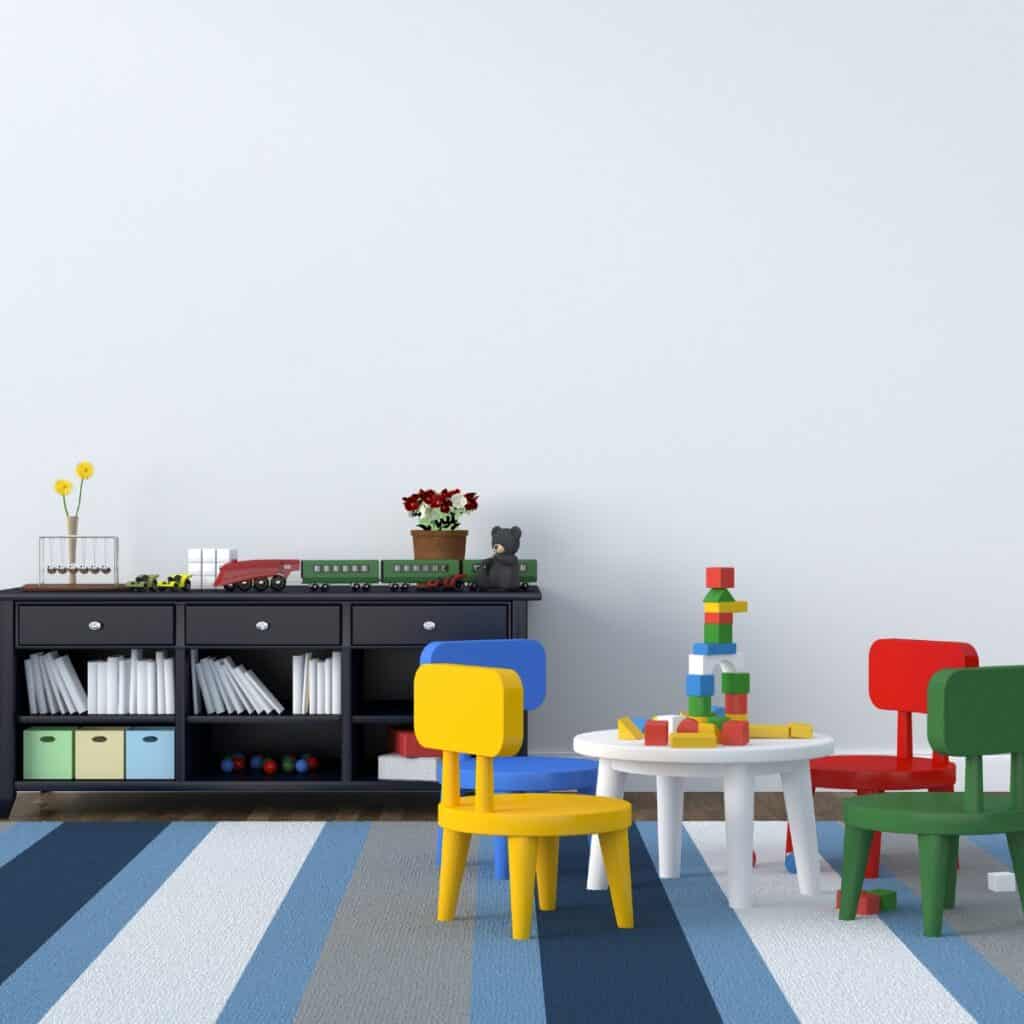A playroom is a designated space in a house where a child can play, often equipped with toys and playthings. It can be a separate room or part of another room.
A playroom provides a safe space for children to explore their imagination and develop motor skills, as well as socialize with other children. It also gives parents a break from the noise.
This article will cover what a playroom is, why it’s important, and what to consider when choosing one.

In this post we'll cover:
What Exactly is a Playroom Anyway?
A playroom is a designated space in a home that is specifically set up and equipped for children to play in. It’s a room where kids can let loose, fiddle with toys, and engage in imaginative play without worrying about making a mess or disrupting the rest of the house.
The Purpose of a Playroom
The purpose of a playroom is to provide children with a safe and stimulating environment where they can play freely and explore their creativity. It’s a space where they can develop their motor skills, socialize with other children, and learn through play.
Playrooms Around the World
Playrooms are not just a Western concept. In fact, many cultures around the world have their own versions of a playroom, such as:
- Pokój zabaw in Polish culture
- Oyun odası in Turkish culture
- Детская комната (detskaya komnata) in Russian culture
No matter where you go, children need a space to play and explore, and a playroom is the perfect solution.
Creating a Safe Playroom for Your Little One
When it comes to picking furniture and items for your child’s playroom, safety should be your top priority. Here are some tips to keep in mind:
- Choose furniture that is durable and able to withstand wear and tear. Solid wood pieces are a great option, preferably with natural finishes that are free from harmful chemicals.
- Look for lightweight furniture that is easy to move around, as this can help prevent accidents.
- Avoid furniture with sharp edges or corners that could pose a risk to your child.
- When picking toys, opt for those that are age-appropriate and free from small pieces that could cause choking hazards.
- Keep cords and blinds out of reach to prevent your child from getting entangled.
Implementing Safety Measures
Once you have the right furniture and items in place, it’s important to take additional steps to ensure your child’s safety:
- Install safety locks on drawers and cabinets to keep potentially dangerous items out of reach.
- Keep windows locked and consider adding window guards to prevent falls.
- Store toys and other items in containers with lids to keep them organized and free from clutter.
- Consider investing in extra padding or mats to create a soft play area for your child.
- Keep a first aid kit on hand in case of accidents.
Encouraging Independent Play and Development
While safety is important, it’s also crucial to create a playroom that encourages your child’s development and independence:
- Choose toys and activities that promote learning and skill-building, such as puzzles and building blocks.
- Make sure your child has plenty of space to move around and play freely.
- Consider adding a small table and chairs for art projects and other creative activities.
- Keep the playroom free from distractions, such as TVs and electronic devices, to encourage imaginative play.
- Allow your child to explore and discover on their own, but always keep a watchful eye to ensure their safety.
Remember, creating a safe playroom doesn’t have to break the bank. There are plenty of affordable and highly-rated products available that can help you keep your child safe while also encouraging their development and creativity. With a little bit of time and effort, you can create a playroom that both you and your child will love.
Let’s Paint the Playroom: Choosing the Perfect Colors for Your Child’s Imagination
When it comes to choosing paint colors for a playroom, classic colors like navy, gray, and light pink are always a safe bet. Benjamin Moore’s Stonington Gray adds a touch of sophistication to the room, while navy and light pink create a whimsical and playful atmosphere. Lavender is also a great option for a calming effect.
Bright and Bold Colors for a Striking Adventure
For a more fun and adventurous playroom, consider incorporating bright and bold colors like yellow, green, and teal. Sherwin Williams’ Sea Salt is a favorite for a tropical or beach-themed playroom, while a bright yellow adds a fantastic sense of energy to the room. A teal or green can also be used to create a nautical or pirate-themed playroom.
Explore Your Child’s Imagination with a Themed Playroom
If your child has a favorite adventure or interest, consider incorporating it into the playroom’s color scheme. For example, a jungle-themed playroom can use shades of green and brown, while a space-themed playroom can use shades of blue and silver. The possibilities are endless, and adding a themed color scheme can really bring your child’s imagination to life.
Conclusion
So there you have it- everything you need to know about playrooms and why they’re such a great idea for any home.
You can use them to play, to learn, and to just have fun. So don’t be shy and go ahead and get one for your child. They’ll love you for it!
I'm Joost Nusselder, the founder of Tools Doctor, content marketer, and dad. I love trying out new equipment, and together with my team I've been creating in-depth blog articles since 2016 to help loyal readers with tools & crafting tips.
